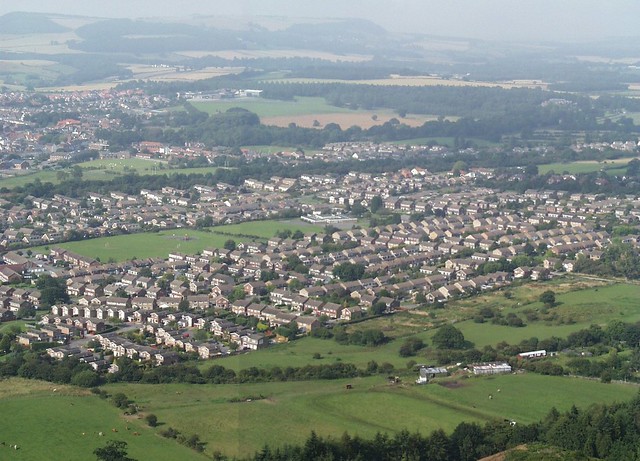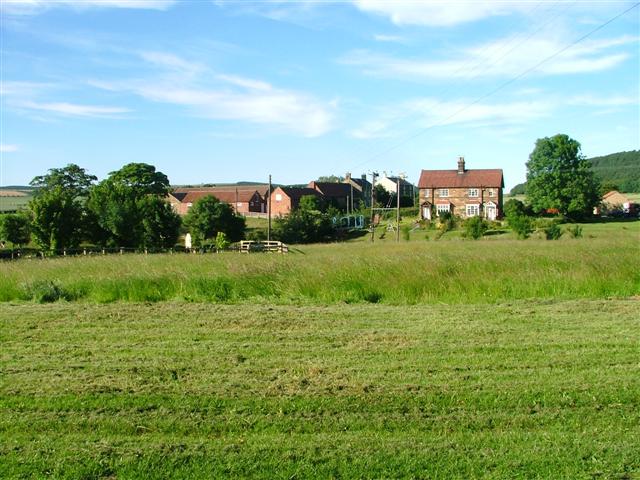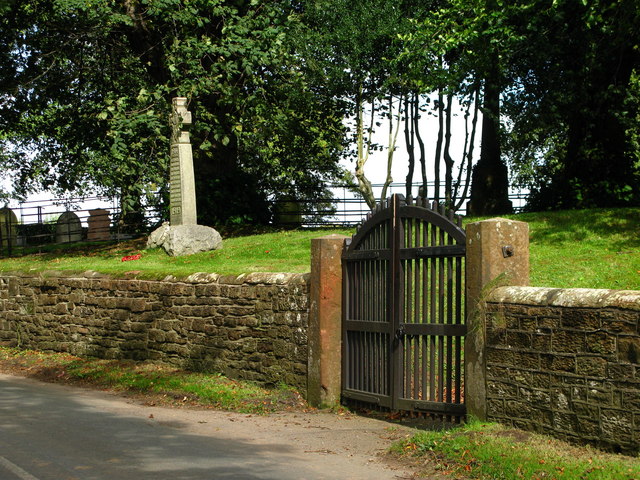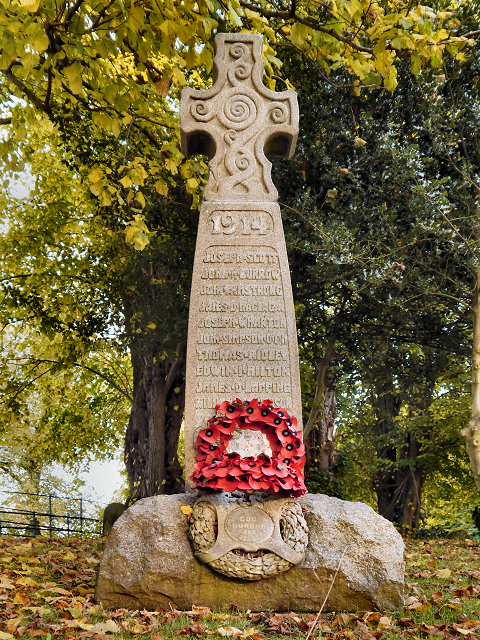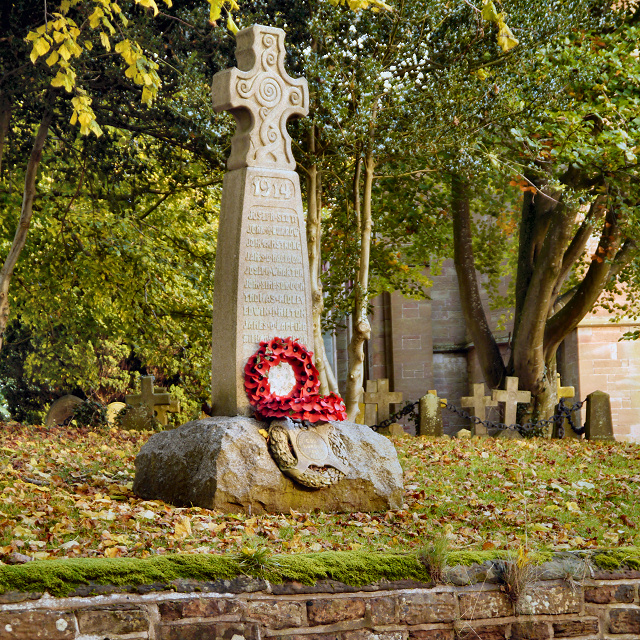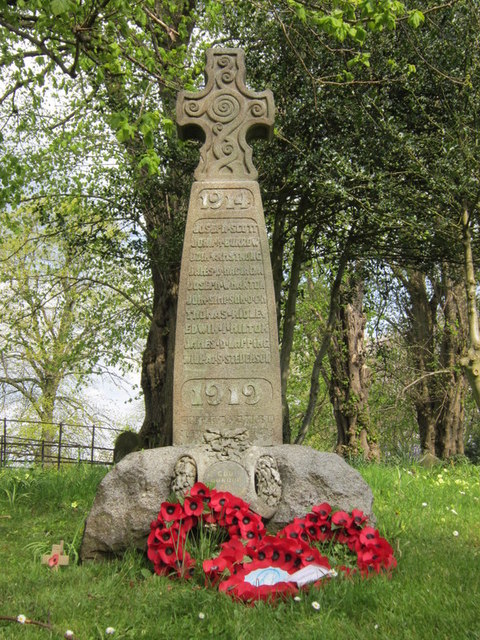Topics > Tees Valley > Guisborough > Guisborough Parish, 1848
Guisborough Parish, 1848
GUISBOROUGH, or Guilsborough (St. Nicholas), a market-town and parish, and the head of a union, in the E. division of the liberty of Langbaurgh, N. riding of York, 49 miles (N.) from York, and 244 (N. by W.) from London; comprising the townships of Commondale, Guisborough, Hutton-Locras, Pinchingthorpe and Tocketts; and containing 2,015 inhabitants, of whom 1,776 are in the town. This place, in the Domesday survey Ghigesburg, was soon after the Conquest granted to Robert de Brus, who in 1129 founded a priory for Augustine canons, which continued to flourish till the Dissolution, when its revenue was returned at £712. 6. 6. Of this once splendid structure, in which were interred its founder and many of his successors, the only remains are a lofty archway joining a portion of the east window, situated near the present church. The site and lands were bestowed upon Sir Thomas Chaloner, whose descendant is the present lord of the manor. In the reign of Elizabeth, Sir Thomas Chaloner brought over workmen from Italy, and established here some alum-works, the first of the kind in England, which were subsequently transferred to Lofthouse and Boulby, where they have been ever since carried on upon a very extensive scale.
The town, which is situated in a picturesque and fertile valley, on the road from Stockton to Whitby, consists of one street, containing many well-built houses, whereof several are of freestone found in the parish. In the spacious market-place is the town-hall, a handsome building, erected in 1821 on the site of the ancient tolbooth, and supported on arches inclosing an area appropriated for shambles, above which are the court-rooms and apartments for the transaction of public business. No particular branch of manufacture is carried on, but the shops are well stored with various articles of merchandise; three branch banks have been established, and there are some good inns and posting-houses. The market is on Tuesday; and markets for the sale of wool are held on the last Tuesdays in March and April, the Tuesday before Whit-Sunday, the third Tuesdays in August and September, and the second Tuesday in November; also fairs on the last Tuesdays in June and July. Petty-sessions for the division are held every alternate Tuesday. About a mile to the south-east of the town a mineral spring was discovered in 1822, which has acquired some repute; accommodations for drinking the waters have been provided, and the beauty of the vicinity attracts many visiters to the spot.
The parish forms part of the district called Cleveland, and comprises about 11,900 acres, of which more than 4,000 are open moor, affording good pasture for sheep; the soil of the arable land is generally fertile, and in the management of the several farms the most improved system of agriculture prevails. The living is a perpetual curacy, in the patronage of the Archbishop of York, who is the appropriator; the net income, previously £67, has been augmented to £150 per annum by the Ecclesiastical Commissioners, and with a sum of £26 a year for a parsonage-house, by the Ecclesiastical Commissioners, the archbishop, and the parish. The church was partly rebuilt in 1791. There are places of worship for the Society of Friends, Independents, Primitive Methodists, and Wesleyans. The grammar school, and hospital of Jesus, were founded in 1561, by Robert Pursglove, the last prior of Guisborough, who gave lands and property now producing an income of £329, for the maintenance of the school, and of six aged men and the same number of aged women. The master of the school has a salary of £50, and each of the almspeople a weekly allowance of five shillings, and a supply of clothing: the buildings comprise a schoolroom, with a house for the master, and apartments for the almspeople. Providence school, founded in 1790, by subscription promoted by Mr. George Venables, of London, who was the chief contributor, was originally built on land given by William Chaloner, Esq.; the old building is now appropriated as a residence for the master and mistress, and two spacious schoolrooms have been erected for 100 boys and 100 girls: the school is supported by the interest of £2900, vested in the 3 per cents. The Rev. Richard Lumley bequeathed a farm of 61 acres, now producing £100 per annum, to the perpetual curate, for reading daily prayers in the church to the inmates of Jesus hospital. There are several small rent-charges and bequests for distribution among the poor; and a savings' bank for the eastern division of Langbaurgh liberty has been established. The union of Guisborough comprises 27 parishes or places, containing a population of 10,543 persons, and the union workhouse will accommodate 250 inmates. Walter Hemingford, a monkish historian of the 13th century, was a native of the parish.
Extract from: A Topographical Dictionary of England comprising the several counties, cities, boroughs, corporate and market towns, parishes, and townships..... 7th Edition, by Samuel Lewis, London, 1848.


